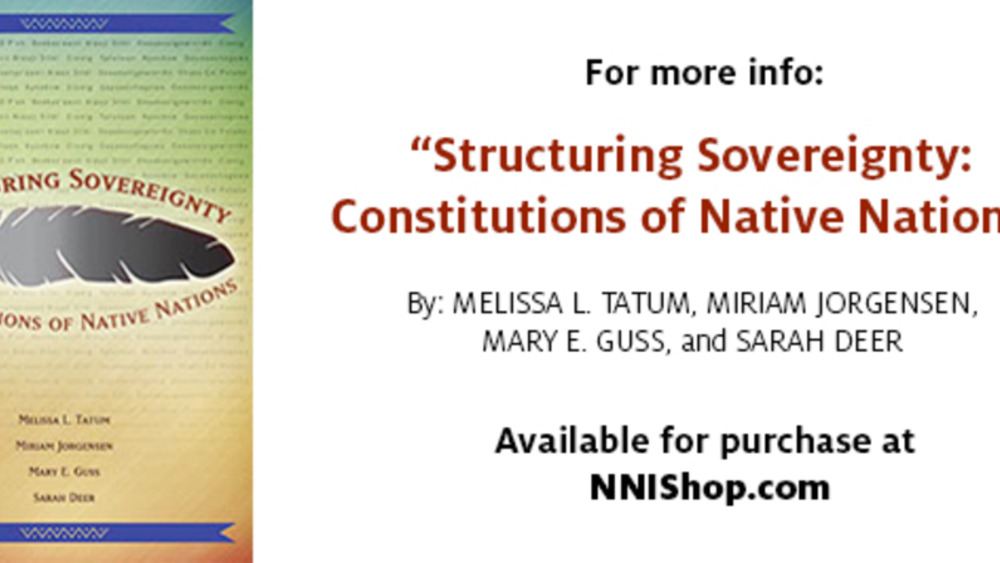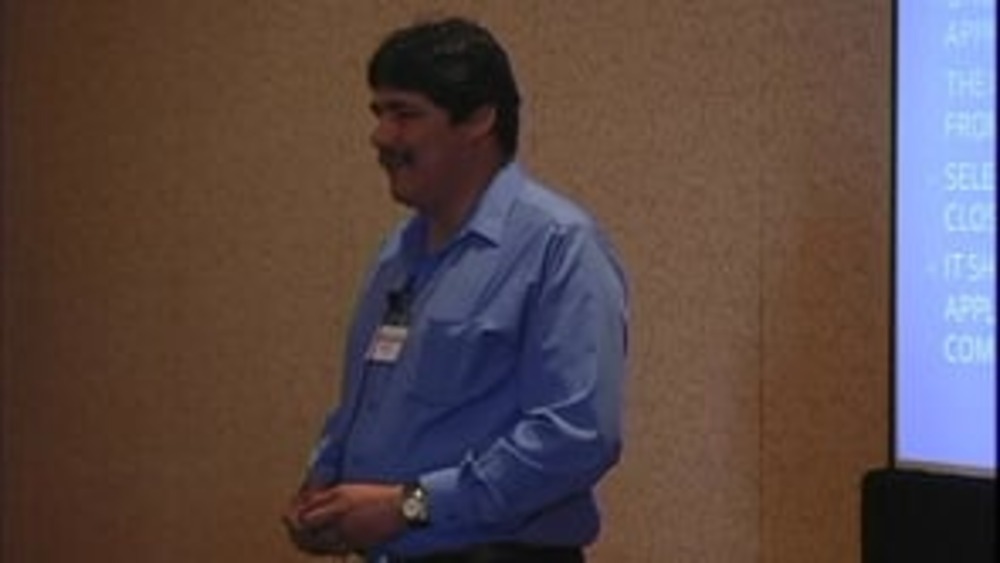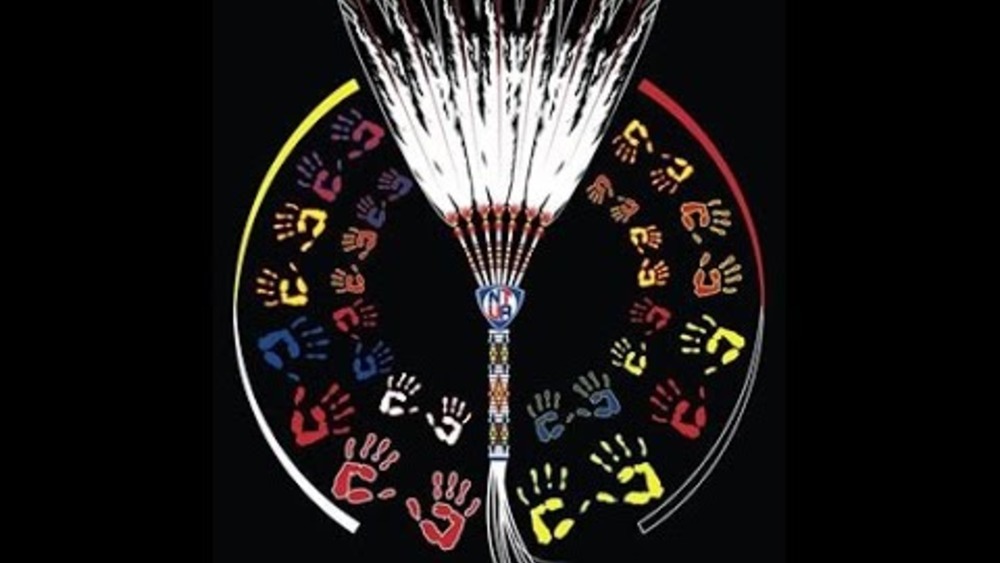Blackfeet Constitution Reform Committee Member Virgil Edwards discusses the process the Blackfeet Nation devised to reform its constitution, and describes how politics ultimately derailed the process before it could produce a new constitution for the Blackfeet people.
This video resource is featured on the Indigenous Governance Database with the permission of the Bush Foundation.
Additional Information
Edwards, Virgil. "How Are We Going About Remaking Our Constitution?" Remaking Indigenous Governance Systems seminar. Archibald Bush Foundation and the Native Nations Institute for Leadership, Management, and Policy, University of Arizona. Prior Lake, Minnesota. May 2, 2011. Presentation.
Transcript
"I'll try to get through this. I don't really know how to operate this thing. I might use this little button here or maybe this button. I just learned to text last week. My grandkids said, ‘Why don't you text me, grandpa?' And I said, ‘Heck, I can drive out to your house faster than I can text.' So I'm going to try to push the right button here.
The Blackfeet Nation has a lot of resources like probably many of your reservations. We have a lot of acreage, timber and freshwater lakes, tourism. We're adjacent to Glacier National Park. We see two million-plus visitors. We have 340 producing wells and these new 25 wells looking for that Balkan formation; so a lot of resources. Sadly, there's about 400,000 acres of our one-and-a-half million acre reservation that's owned by non-members, but the rest of it is controlled by the tribe; the entire reservation is controlled by the tribe. We have roughly over 16,000 members. 9,000 or so live on the reservation, about 7,000 off. But we have 70-80 percent unemployment. How could that be with all of these resources? How could we have this problem, this poverty issue?
The Blackfeet constitutional reform is...the tribe, I don't know which other tribes did it, but when it came around, there were opportunities to vote on the constitution and the people voted for it and we had a constitution in 1934. Almost immediately, we found that we didn't get what we had bargained for back then. I wasn't around back then, but listened to the old timers talk about it. That we had, there was dissatisfaction with the IRA [Indian Reorganization Act] government. And in 1944, there was a letter to the commissioner asking for reform. They wanted to change it. It didn't do as it had promised. It promised to do away with the loss of our land and to give us self-rule and to begin economic development. They weren't happy then with the constitution.
And then about ten years later, there was a constitutional convention, another attempt. And I found some records about that, how a group of people wanted to try to change the constitution. In 1964, another attempt was made and this is where I think corruption really started to happen, because of the lessening of that Class A funds. The Bureau of Indian Affairs controlled that funding source from our resources and then the councils got control of that -- and I think they were worse than the BIA -- and they became somewhat corrupt. And so in 1972, there was another attempt and I worked n that issue.
We began in 1970 and worked for two years in redrafting a constitution. Two hundred fifty people from across the reservation and off the reservation worked on the constitution to revise it completely to try to take advantage of our resources and curb this poverty issue and all the social ills that we have -- put the money where we thought it should go. And a new council was elected and that attempt failed through their council vote and so they did not support that so it went away. And there were sporadic attempts over those times to try to do something with the constitution and change it for the, to give the people a voice, but it just never really happened. And then we had a -- I guess this is just a little bit more about the IRA -- we adopted the IRA constitution and approval of secretary [of Interior] is riddled throughout our constitution. I think it appears in our constitution about 17 times. You really can't do anything unless you have the permission from the BIA.
In 2008 or maybe 2006, we had a council that started to believe in reform and had almost the perfect setting. The majority of our nine-member council wanted to see something happen and change. And so it was the beginning of this reform movement in this past two years that we had went through. So there was a referendum that was passed by the people and the people overwhelmingly supported this need for change. Incidentally, in our constitution, it says that this referendum process is legal and binding upon our councils. And so we had the support of a council that was in place. They put together a committee of five people -- myself included along with Greg Gilham and John Murray, and G.G. Kipp (we call him; he's a bundle holder), and Linda Warden has a background in law enforcement; I have a background in business -- and we began the process of trying to change the constitution.
We went out to the communities and sadly one of the things we discovered is that most of the older people who had lived under our constitution and maybe knew something about it were gone. There were only a few. In fact at the constitutional convention, we had a couple elderly ladies there that were in that reform movement that I was in -- and 85 years old. And they stayed there religiously every night to help frame the constitution. But we went out to the communities and we visited with the people. And these were sparsely attended, but what we found was that the younger generation was really ignorant of our constitution. They really didn't understand it or even know of its existence or what our council should be doing for them with their resources. We found then that -- because of this lack of knowledge of our constitution or our governing way for the Blackfeet -- that it was important then to go out and go to the people and find out another way to get their interest peaked in this area.
And so we got a hold of the Blackfoot Project and that's a group of people looking to improve their education, higher education people, people who were seeking their doctorates and masters degrees. And this is a group of maybe about 60 people, all Blackfeet members, mostly women. So they went out and we found these focus groups. We targeted the college students and the elders and the tribal employees, people who worked for our tribal government, business leaders, the TANF [Temporary Assistance for Needy Families] participants, all of these different groups of people and put them into focus groups and discussed with the constitutional reform and change and getting their ideas. So I thought this was really significant. It showed us that people wanted to support the change after they talked about it. We made copies of our constitution, our present constitution, and placed those all over the reservation and brought them to the schools and to the Blackfeet Community College. I think we did the right thing in getting the people educated, but I can't overstate the importance of education of the membership that's going to be deciding the constitution. It's just so critical and a lot of time needs to be spent in this process.
We did interviews and went to the educational system. And then we found out that what we would do is we'd try to kick this thing off. We developed a plan and we had a symposium. We had a two-day symposium -- much the same as we're doing here -- but we had over 200 participants in that symposium. And we invited every walk of life on the reservation you can imagine and we took walk-ins also. We had standing room only at times and we invited people from the Native Nations Institute, other people that were involved in reform. I think we invited somebody from the Crow Reservation [that] had just recently changed their constitution. And so it really built some enthusiasm, groundswell of involvement.
People wanted to get involved and so we followed that up with a constitutional convention. It was overwhelming. We had it at the Blackfeet Community College in the commons room and we had all these participants showing up and we broke them into five groups and we began the process of them writing the constitution. We as committee members acted as facilitators in discussion and led them through each segment of our constitution. So that's how they wanted to start and we did it their way. So I think this ownership has to be from the people. You can maybe hire some [legalese] to go out there and write your constitution and do whatever you can, but it really is going to take the people to draft the constitution and that's what we did.
We had the people involved to every level. Of course we did feed them. They like to eat. Like I noticed that, where did he go? Taken Alive? I think that was the fifth trip he made up there to that. So we fed the people. Important to take care of their needs there and it was done after hours. People volunteered there. We made it available, the convention, on their time. We didn't hold it during the business hours so that people could attend in the evenings. Sometimes we went until midnight. So a very long day, but that's what the people did. They were really enthused and so we had a lot of people attend the drafting process.
We published everything that we did in the local papers. We built a website and we let the news out there and we got on the local radio station and we talked about the constitution. We had debates and just invited everybody into this thing so that it was real transparent to see what the change was, how it was affecting and answered all the questions. So we did all of this and it was a great thing. So finally after all of these sessions, and also we involved the...in some of the last sessions, we involved the people working for the tribal government, all the departments, all the directors. And they were excited about this change and it was just a great thing to see that this could happen.
So finally, I think the next planned step was to work with the attorneys. We hired a couple of attorneys that had worked in constitutional reform and they took the writings of the people and they began to condense them down. There's a lot of verbiage in these constitutions -- people say it like they want to say it -- and so we hired those people and we began that process in July. We were...after that, the plan was to get the draft and then go back out to the people, have them review it, see if there's any changes they need -- giving them a second look at it -- and then continue ultimately to that voting day when it would happen.
Now sadly, what happened is that in June of 2010 we had a new election. That support that we had on that council was there, five out of the nine. And then unfortunately some of those people didn't get reelected. So we had a new council elected and they ended it all for us at their very first meeting. The chairman, along with the other four -- two of them newly elected -- voted to kill the reform movement. Now you would think then with all these people involved, the number of people that taught constitutional change, would have got excited and rushed to help us out, the committee. What I think it was like when Christ was there and he looked around and where were they? They weren't there.
But I'll tell you what happened. I think that...on our reservation, our Tribe, our government employs 850 people. And so if you look at that and you spider web that out there, you'd see that maybe this person isn't working for but your daughter may be working for the government. So if you speak up against these people, there's a chance then that you could jeopardize your family member's job. That's sad, but that's the truth. Our tribal government now goes through millions of dollars unchecked without anybody...a $15 million bonus here last month or two months ago and it's gone; disappears into what we call the 'Black Hole 099.' And all these opportunities for economic development are gone and change is no longer there.
So that's what happened to the Blackfeet. I think we did it right, I think we had the right idea, but sadly we don't have the support of the current sitting governing body and really that's the end of it. One of the interesting things I'd like to point out to you -- what the framers found as they were looking through our present constitution -- we have jurisdiction over a single line on the map. Most of these boilerplate constitutions that come out I suppose it said, ‘Define your boundaries by your last treaty.' Our last agreement with the government was for the sale of Glacier National Park and it describes the western boundary of our reservation. So we have jurisdiction over a single line on the map. A flaw, serious flaw that's still there after 76 years. We can't develop a meaningful inheritance code because of a single line in there and there are other issues. We give eminent domain to the State of Montana and any agency thereof or the federal government in our present constitution. Serious flaws, but we can't do a thing about it. And that's really it. That's what happened to us. That's the Blackfeet experience. I didn't see the stop sign, but I'm going to stop before she flags me. Thank you."



